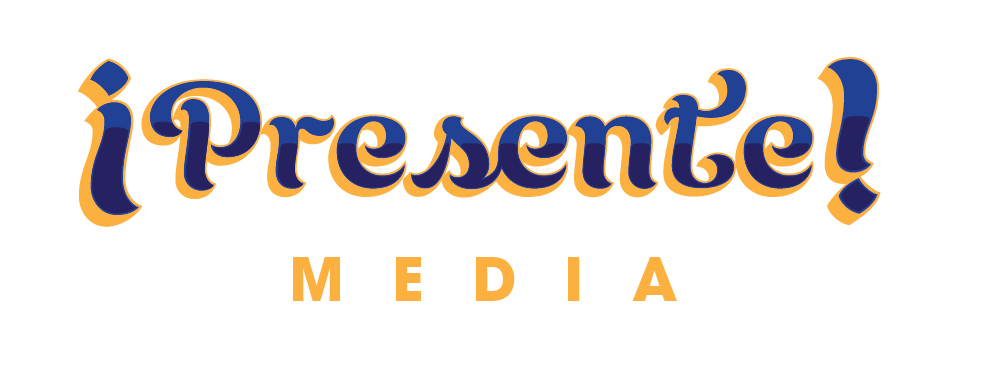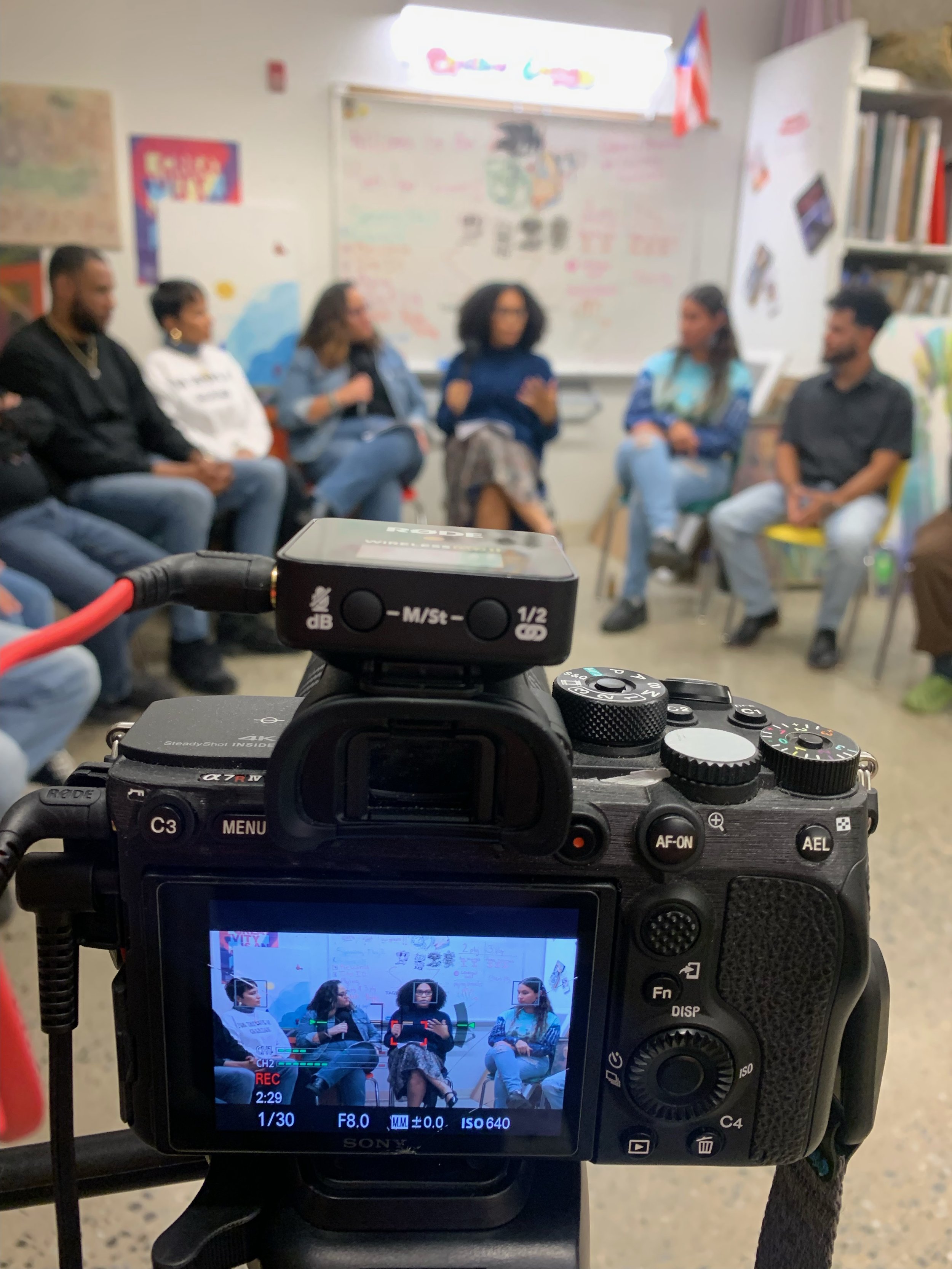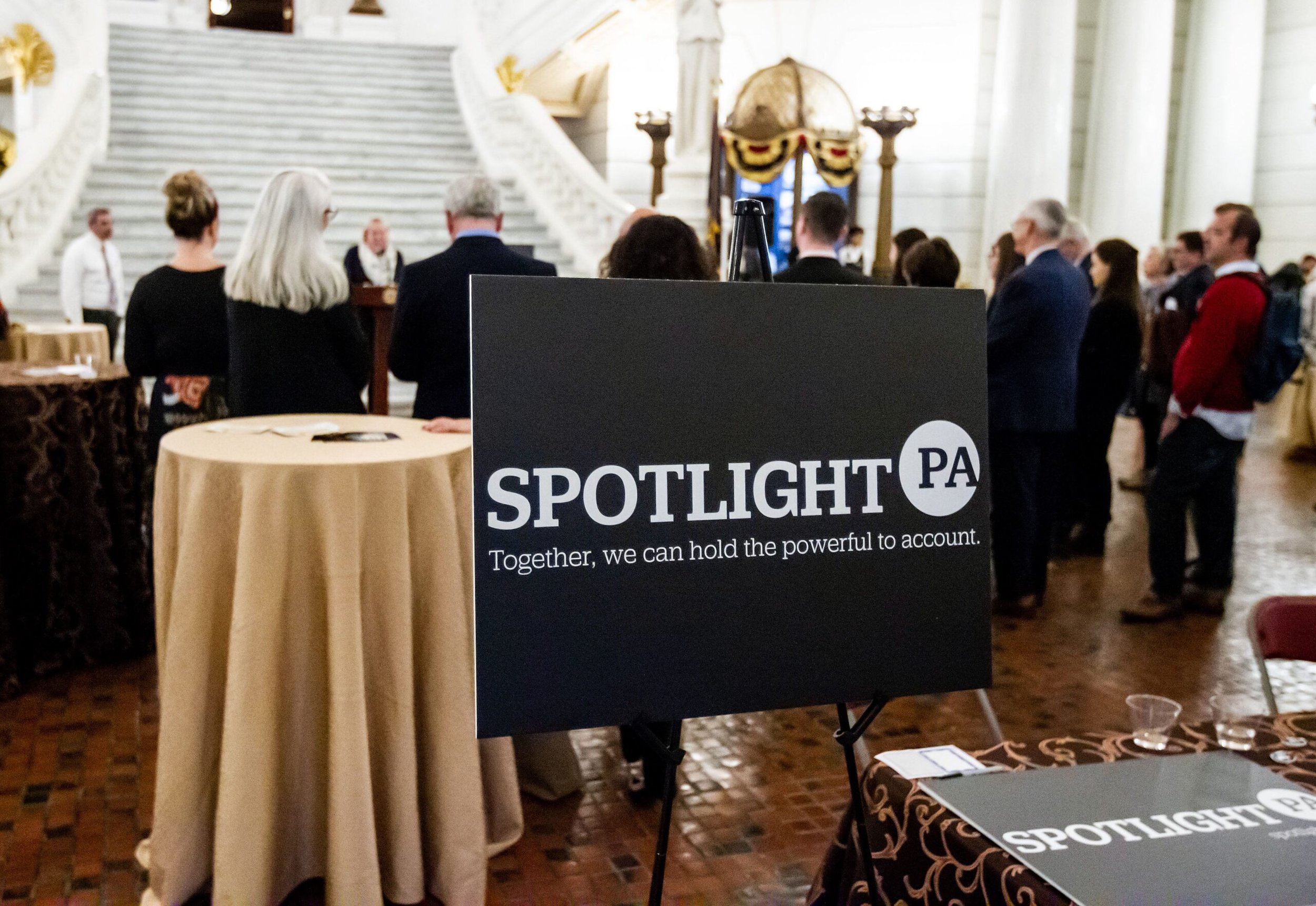Philly Latinx artists gather to discuss the challenges of the creative economy
At the final event of the “Cuéntame Series: Creative Economy,” local artists and community leaders discuss barriers to funding and the importance of cultural heritage in fostering artistic collaboration
BY JENNIFER HERNANDEZ ON NOVEMBER 6, 2024
Group photo of attendees. (Credit: ¡Presente! Media)
In Philadelphia, a vibrant tapestry of voices rises from the community, each contributing to the city’s rich cultural landscape. The inviting atmosphere at Taller Puertorriqueño on October 24 was the backdrop for the second and final event of the “Cuéntame Series: Creative Economy,” a collaboration between ¡Presente! Media, Madre Tierra, and Taller Puertorriqueño. This gathering marked a significant moment in fostering civic engagement and democracy as community members came together to address the barriers facing local creatives. Co-hosts Arianne Bracho Hernández, Executive Director of El Centro Integral de la Mujer Madre Tierra (CIMMT), and Frances Almodar, multimedia producer and event coordinator at ¡Presente! led the discussion, highlighting the challenges inherent in securing the necessary funding for artistic projects amid high expectations for reporting and accountability.
Participants shared their experiences navigating the complexities of the creative economy. “Our culture is a vibrant culture, full of colors, flavors, and diverse rhythms,” Bracho Hernández emphasized, underscoring the vital role that creative individuals play in enriching the community. Almodar echoed this sentiment, pointing out that the available funding often falls short of the support needed to thrive. The event not only spotlighted the struggles faced by local artists, but also aimed to identify actionable steps toward a more supportive environment.
Exploring the outside world through art
Jean Ruiz, a passionate STEM educator, dedicates his life to inspiring children aged 5 to 13 through innovative projects in the classroom.
“I want my students to explore diverse skill sets,” Ruiz shared, emphasizing the importance of 3D printing, wall painting, and gardening in fostering creativity and wisdom. Drawing on his experiences in local schools, he is determined to ensure that vital cultural and ancestral traditions are preserved and celebrated through education.
Amidst the artistic fervor, Javier Actuve, a Venezuelan graduate and garden design specialist, echoes a similar sentiment. “Every culture shares colors and wisdom,” he explained, reflecting on the parallels between his homeland and the communities he has encountered in the seven years since moving to Philadelphia. His zeal for ancestral traditions is mirrored in the work of others who strive to highlight cultural heritage through art and education.
Reyna Cásarez, a multidisciplinary artist and cultural organizer, emphasizes the need to maintain cultural customs within the Latino community. Living in Philadelphia for 17 years has equipped her with a profound understanding of artists’ challenges in securing funding and support.
“Creating connections with other artists and volunteers is essential,” she notes, underscoring the importance of community in fostering artistic initiatives. Cásarez’s dedication shines through her numerous non-profit endeavors to amplify the voices of those often overlooked.
Stephanie Hamill, known by her artist name “Stef Lunita,” draws inspiration primarily from nature and the youth she mentors. “My work is profoundly connected to the Earth and my ancestors, but the creativity of my students also fuels my passion,” she explained. As someone who works with high school students, Hamill sees a bright future filled with potential for young artists, advocating for more funding and opportunities to support their growth.
Adding to the narrative of community resilience, Edgar Ramirez, founder of Philatinos, reflects on his 15 years of service as a community volunteer in Philadelphia despite not being an artist himself. He recalls the challenges faced when the cultural center Casa Monarca was forced to close due to a lack of resources. Nevertheless, Ramirez remains hopeful and engaged, believing that through collaboration and patience, communities can revitalize their cultural initiatives and preserve their legacies for future generations.
The attendees engage in a conversation guided by co-moderator Frances Almodar. (Credit: ¡Presente! Media)
Art as Healing
Ayiana Viviana, a curator, photographer, and writer, shared her transformative journey as an artist. “My artistry was born from a really dark place,” she began, candidly discussing how she emerged from a difficult period in her life. “I became an artist a little over two years ago, and it was because I didn’t want to live anymore.”
As she faced her inner turmoil, Viviana chose to listen to a voice that encouraged her to pick up a paintbrush instead of succumbing to despair. “From that divine intervention, I’ve created this beautiful light for myself that has been very healing.”
Now, as an artist, Viviana’s mission is to promote art as a healing modality. “All of these emotions we process, we can express them through art, whether that be writing, painting, or whatever form it takes,” she explained.
In a conversation with Odín Palacio, an artist known in the community as Udini La Voz, Viviana emphasized that art is a fundamental form of storytelling in any of its manifestations. She reflected on her pursuit to transition to a full-time artist, revealing her relentless drive to seek opportunities such as grants, fellowships, and residencies to secure financial support.
“I’ve taught myself to seek the opportunity,” Viviana shared, noting the overwhelming demands she faces as she tries to balance art creation with the administrative tasks that come with funding applications. “The most troubling thing, the limiting thing, is that I don’t have enough time.” She elaborated on the juggling act involved in managing her creative process alongside the necessity of modern-day grant writing and project management.
“I have to make the art. I have to do the applications. I have to do all the things, and then I do get the opportunity, and now I have a project I have to work on. So for me, the limitation has been, and it still translates to the funding,” Viviana added
Despite these challenges, Viviana expressed her commitment to excellence in her work. “I’ll see wonderful opportunities that maybe I would qualify for, but then I have to think, can I manage this and still produce something that is excellent?”
She acknowledged the potential benefits of having a dedicated individual to help streamline the process, such as a manager who could assist with research and administrative tasks. “All I want to do is create,” she affirmed. “That’s all I want to do.”
Finding Artistic Identity
Palacio shared his journey during the event. Originally from Panama, Palacio expressed how his motivation to pursue art stemmed from an impactful experience in school. “A teacher once told me how deep my writing style was,” he recounted, emphasizing that this revelation helped him uncover his artistic talents. While basketball was his initial passion, Palacio found solace in music and writing, realizing he could also convey profound themes through his art. “That was the only thing I needed to find that talent in me.”
Palacio shared a heartfelt message about the struggles of representation in the creative community. “Our passion is to create, create, create, create,” he said, emphasizing the relentless drive that artists have to bring their visions to life.
However, he pointed out that amidst this enthusiasm, many artists often lose sight of the business side of their work, which is crucial for sustainable progress. “What we do is interconnected with how we push forward in our careers,” Palacio explained.
He highlighted the pressing need for better representation within artistic organizations and funding bodies. “Lack of representation is a significant barrier,” he asserted, advocating for organizations to invest time in genuinely understanding the artists they aim to support.
“If these organizations have someone who truly focuses on getting to know us as artists—what we represent and the stories we tell—they can more effectively advocate for our needs,” Palacio noted.
Through this understanding, he believes that organizations can better align their support with the aspirations of artists. “This is what we need to thrive,” he said passionately. By fostering these connections, Palacio emphasized that artists can enhance their practices and contribute meaningfully to the broader cultural landscape. This appeal for collaboration and understanding highlights the integral role of authentic representation in empowering local creatives to succeed in their endeavors.
¡Presente! Media has recorded these conversations in preparation of the first short film screening on November 21, 2024.
(Credit: ¡Presente! Media)
Funding creative careers
Almodar opened the discussion by thanking participants for sharing their personal stories and expressing admiration for the passion and excitement for life that came through in their narratives. She posed a poignant question to Jay Coreano, a Philadelphia native and full-time artist, about the complexities of funding an artistic career. While acknowledging many artists’ financial difficulties, she encouraged a broad dialogue among the attendees, inviting them to share their unique experiences with fundraising, side jobs, and grant applications.
Coreano responded by reflecting on his artistic journey, describing his initial struggle to discover his identity as an artist. He emphasized the importance of self-discovery and the challenges artists face without comprehensive guidance in navigating their careers. After recently applying for his first grant, Coreano shared his transition from creating art solely for personal expression to serving his community by catering to their interests. He discussed the necessity of building a supportive community, noting how even small sales can provide essential income. His focus has shifted towards larger projects, particularly as a muralist, as he continues to foster connections that enable his artistic endeavors.
Bracho Hernández shifted the conversation to Ramirez, acknowledging his unique contributions despite his initial reluctance to label himself an artist. She recognized his significant role in projects such as Philatinos and Niñas de Danza. Bracho Hernández sought insight into how Ramirez finances his initiatives, asking about his involvement with grants, personal funding, and other forms of fundraising, and encouraged him to share his successful experiences in the field.
Ramirez reflected on the challenges faced by first-generation immigrants in the cultural landscape of Philadelphia. “We are often navigating a system that makes it difficult for us to thrive,” he noted, emphasizing the significance of community events like the Carnaval de Puebla. His involvement in the event spans 17 years, and he shared that funding remains a constant hurdle despite its cultural importance.
“The carnival costs about $70,000, mostly financed by participants who contribute around $150 each. The city charges us significantly for all the necessary services,” Ramirez explained, highlighting cultural groups’ economic pressures.
He continued to share insights about community involvement, particularly the role of parents in fostering a love for the arts among children. “It’s the parents who advocate for the importance of art, enabling their children to embrace their culture and take pride in their heritage. We teach them to create and then to present their work confidently rather than seeking permission to express their identities,” he stated.
Ramirez also addressed the financial struggles that many in the community face.
“Recently, I was brought to a university for a day, and they compensated us with just $500, which barely covers expenses for everyone involved. This is the reality we face, yet we persist in collective efforts,” he said.
He highlighted Philatinos’ success by saying, “In the last three years alone, we have distributed around 4,000 books in Spanish. We’ve been active for over 12 years, generating resources despite limited funds. Our approach allows us to work effectively whether funded or not, proving that passion for culture can overcome financial barriers.”
Ramirez further emphasized the importance of valuing cultural contributions.
“With Day of the Dead celebrations occurring almost simultaneously across the south, there’s a clear lack of organization. Despite this, if we prioritize the significance of our art, we can attract appropriate funding,” he argued.
He is adamant that the stories and experiences of the Latino community must be authentically shared and that the need for translation should not diminish the richness of their narratives.
“Art should evoke feelings and resonate deeply. The third generation is bridging gaps in cultural understanding, showing a renewed love for our Mexican heritage. We must recognize and value our art, even amidst challenges. We might hesitate to ask for help, thinking it’s inappropriate, but our culture deserves recognition and support,” Ramirez concluded, advocating for a collective movement to sustain their traditions while promoting cultural pride.
The role organizations have in helping creatives
Almodar emphasized the critical role that creative organizations play in Philadelphia. She noted that these groups not only help maintain the stories of individuals but also provide vital resources for artists to succeed. Examples like PhillyCAM and the Leeway Foundation illustrate how local organizations teach and empower youth, allowing them to explore their artistic talents.
Palacio contributed to the conversation by reflecting on his personal experiences with these organizations. He appreciated the networking opportunities and the ability to exchange ideas with other creators. Through these interactions, Palacio has seen creatives from outside the area collaborate and bring innovative concepts to life.
However, he highlighted a notable gap in financial support, stating that while ample spaces and opportunities exist, the need for more funding limits the potential of their creativity. “We take our creativity to a certain level, but not where it needs to be,” he remarked, indicating that financial resources are crucial for artistic development.
When Almodar inquired about the accessibility of such funds, Palacio confirmed that while funding does exist, many artists are unaware of how to obtain it. They shared insights from networking events where they learned about available resources, but also noted the challenges in accessing these funds due to time constraints and limited availability. “Not every artist had that information,” Palacio lamented, suggesting that greater dissemination of funding opportunities is essential.
Their proposed solution is to enhance communication about available resources, ensuring that artists are equipped to pursue their creative projects fully.
As attendees exchanged stories and insights, a common theme emerged: the need for systemic changes that prioritize and uplift the cultural contributions of marginalized communities. The discussions sparked hopes for a future where creatives are seen as invaluable wealth and innovation generators deserving of adequate resources and recognition.
The event concluded with a collective resolve to continue advocating for the creative economy, ensuring that the voices and talents of all community members are heard and supported.













